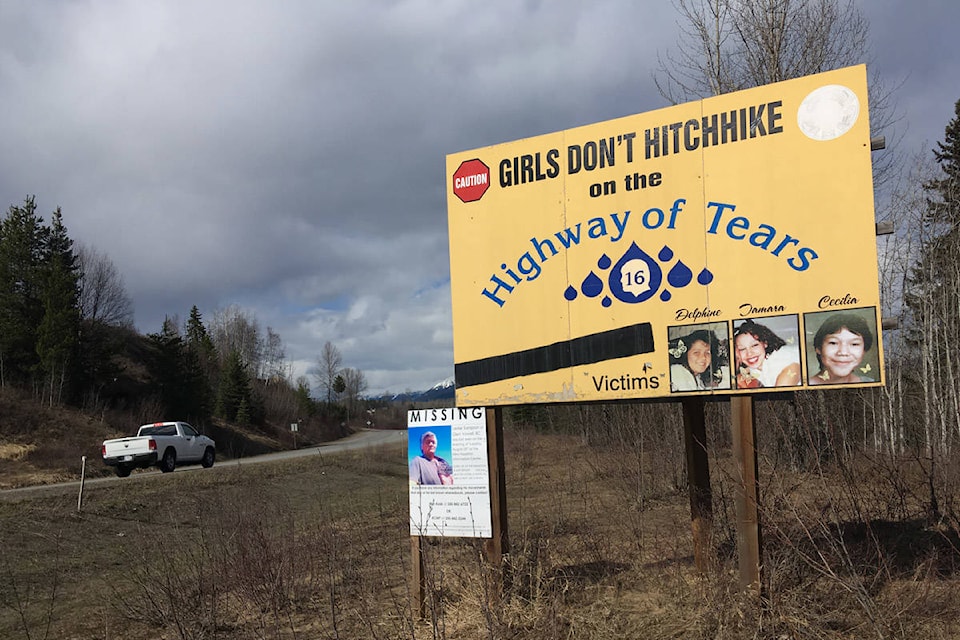The wounds of the Highway of Tears are still very apparent in northern B.C., as evidenced on May 3 when BC Transit unveiled its new line of larger-capacity buses serving this infamous stretch of road.
In other circumstances, the purchase of new buses would be a routine capital spending announcement. Here in Burns Lake, it takes on a deeper dimension.
A community member at the event evoked the memory of Ramona Lisa Wilson, who was just 16 years old when she disappeared while hitchhiking on Highway 16. Her remains were found but the murder was never solved.
Many more women have disappeared from Highway 16 and the surrounding area since Wilson’s 1994 disappearance.
Among the more recent cases was that of Immaculate “Mackie” Basil of Tl’azt’en Nation, who grew up in Vanderhoof. She was 26 in June 2013, when she disappeared from a forest service road northwest of Fort St. James. The dangers in this region, particularly to Indigenous women, are persistent.
Based on speeches by dignitaries at the launch — including Bill Miller, chair of the Regional District of Bulkley-Nechako (RDBN) — local politicians are keenly aware of the need for safe and accessible public transportation.
But few politicians rely on buses to get around. That’s why they need to feel pressure from the people in the community who do, and from their allies in the larger community.
The current moment presents a golden opportunity to get results — an opportunity that takes the form of a crisis for northern transportation services.
What’s the crisis? Greyhound has received permission from provincial authorities to discontinue a number of bus routes by June 1, including the entire Highway 16 line.
Truth be told, this is likely of little consequence for poor people. Greyhound tickets were too expensive anyway. A standard one-way Greyhound ticket from Prince George to Burns Lake currently sells for about $50.
But the exit of Greyhound does leave a major service gap, and the government will have to respond.
It’s important to recognize that BC Transit doesn’t offer a long-haul service that replaces Greyhound.
Their buses aren’t equipped with bathrooms or large luggage racks, and there is no through service from Prince Rupert to Prince George, but rather a series of four lines designed for shorter intercity trips.
And while BC Transit’s $5 fare is arguably a victory for low-income people, it only departs three days a week in either direction from Burns Lake.
In the age of the National Inquiry into Missing and Murdered Indigenous Women and Girls, there is simply no excuse for governments to neglect this issue.
Local government — particularly the RDBN — has an important role to play in developing new transit services. It’s up to local elected officials to provide safe and affordable public transportation, but it’s up to us to demand action now — before another life is lost.
